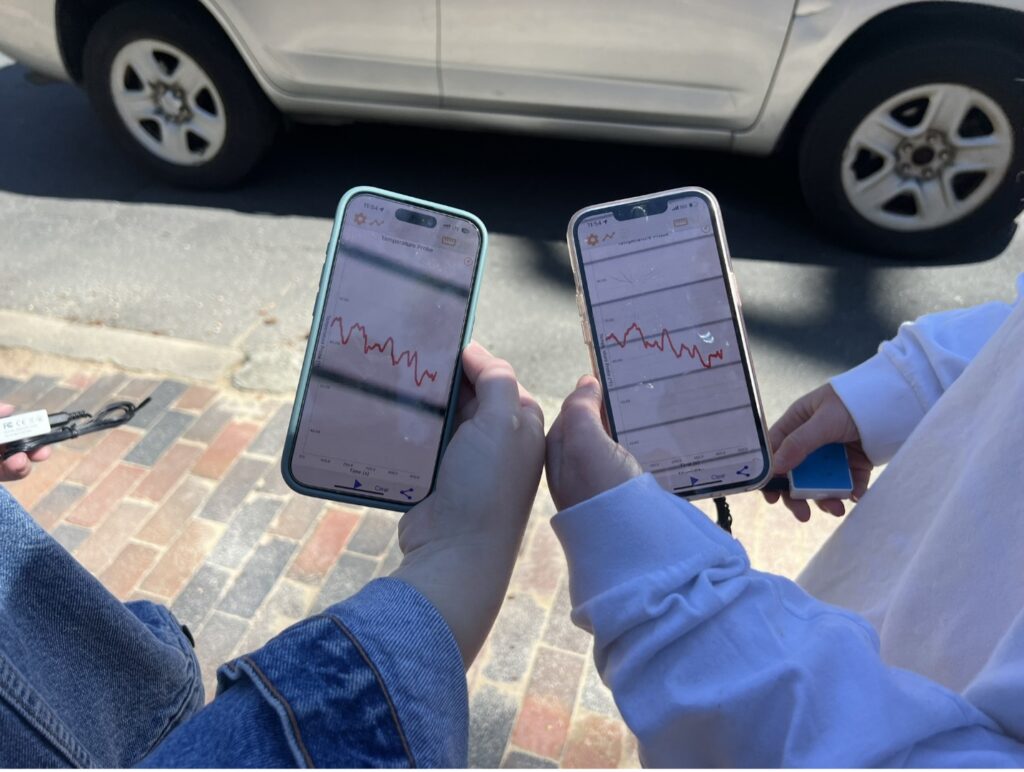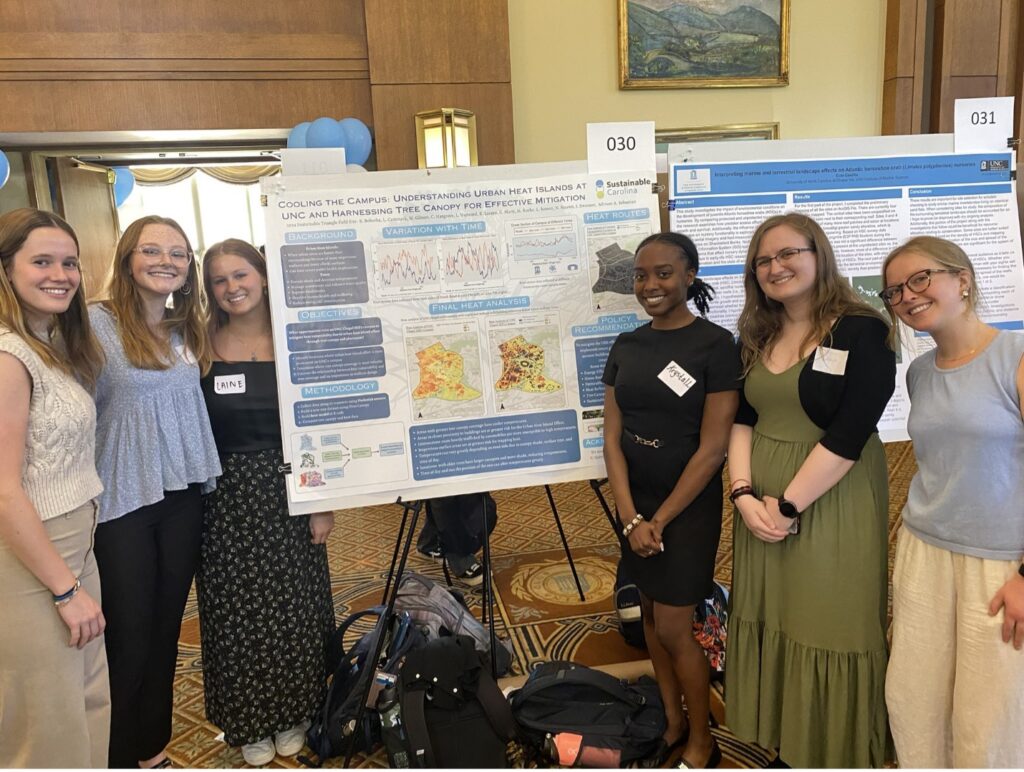 Krystal Lacayo is a graduating senior (Fall 2024) at UNC Chapel Hill majoring in Environmental Studies on the Sustainability Track with a minor in Urban Studies and Planning.
Krystal Lacayo is a graduating senior (Fall 2024) at UNC Chapel Hill majoring in Environmental Studies on the Sustainability Track with a minor in Urban Studies and Planning.
By Krystal Lacayo
The Field Site
The Sustainable Triangle Field Site is one of several field sites offered by the UNC Institute for the Environment. This field site, however, differs from any other as its semester-long research aims to assess and address local issues in the Triangle area around Chapel Hill, Durham, and Raleigh. In addition, this field site encourages students with various strengths in the natural sciences, data systems and informatics, and social sciences including policy, economics, and global awareness to combine expertise to analyze a common question. This past spring semester, under the guidance of Professor Antonia “Toni” Sebastian, my cohort completed a research project focused on environmental issues at UNC and collaborated together to provide multi-dimensional deliverables.
Interest
As the course began, Professor Sebastian introduced my cohort to various stakeholders on campus who were passionate about the sustainability and longevity of the campus grounds and how populations interact with the campus. In our preliminary topic search, my cohort began to focus on trees with University Arborist Tom Bythell’s aid, providing insight into their role on the campus. David Widis, University Landscape Architect, provided context to the design of the campus and how we all engage with it. Interactions like these paved the way for my cohort to question the role of trees on campus in a warming climate and if heat, particularly the Urban Heat Island effect, is present on campus and where.
The Urban Heat Island (UHI) effect is a significant environmental issue impacting urban areas worldwide. Due to reduced vegetation, increased human activity, and man-made infrastructure, urban areas such as UNC have the probability of harboring heat on campus, making this area hotter than the surrounding area.
Methodology
Our research involved defining high-traffic mobility corridors. These corridors took into account human and vehicular traffic alike as these were hypothesized to exhibit higher temperatures due to vehicle emissions and/or reduced vegetation. After picking about ten routes across the campus to analyze where humans and vehicles frequent, we traveled the paths with handheld heat sensors and temperature probes to collect temperature data. We traveled in pairs at various times of the day to account for any temperature discrepancies.

Key Findings
A heat map was created with the data using R. The data we gathered painted a clear picture of the UHI effect on the UNC-Chapel Hill campus. One of the most striking findings was the significant temperature disparities in certain areas, particularly around UNC’s hospitals and South Campus. These regions, characterized by limited tree coverage and extensive infrastructure, exhibited notably higher temperatures compared to other parts of the campus.
Our analysis confirmed the hypothesis that tree coverage does play a crucial role in moderating temperatures. Areas with dense tree coverage were consistently cooler, underscoring the importance of urban forests in mitigating the UHI effect.
Policy Recommendations
Recognizing the implications of our findings, Marie Roche and I authored a policy paper outlining strategic heat mitigation measures for UNC-Chapel Hill. Our recommendations were formulated to align with the university’s infrastructure, environmental goals, and economic considerations. We highlighted green roofs, energy-efficient buildings, urban forest preservation, and renewable energy promotion in public transportation as well as emphasis on an environmental justice philosophy the University must uphold to make the campus equitable for everyone.
Experience
This experience personally provided me with a new and invigorating interest in research. My cohort consisted of different individuals with different skill sets, allowing for a comprehensive study and learning environment. Before this field site, I had analyzed case studies and data after it had been completed and I had only done so with policy or communication interpretations in mind. This field site challenged me to partake in hands-on, “on the ground”, natural science and data system research and analysis. Not only was I able to learn more about scientific research, but I was also able to contribute my knowledge of environmental injustice and the hardships marginalized communities face because of the lack of environmental care.

When my cohort noticed that the hospitals and South Campus were experiencing hotter temperatures than average, it was instantly apparent to me that the phenomena correlated with the populations that lived or moved about those areas. Historically, South Campus (which the hospitals reside in), has been made up of students of color. The lack of trees and vegetation, alongside the limited access to food and the lackluster transportation system that this part of campus relies on, only exacerbates the experience of environmental injustice for these students as well as our most vulnerable populations around the hospitals.
Conclusion
The Sustainable Triangle Field Site provided me with an amazing opportunity to be part of critical research that will shape the future of the campus and the community members’ interaction with their environment. I am thankful for having been able to learn about the data collection and analysis process as well as offer my insight into the possible equity implications of said data. I am hopeful that future cohorts continue to expand this foundational research and that the University takes action to lessen UHI for the prosperity of campus and community health.
To learn more about the 2024 Sustainable Triangle Field Site visit: https://tarheels.live/stfs24/ and to learn more about other UNC Institute for the Environment Field Site programs visit: https://ie.unc.edu/field-education/field-sites/

